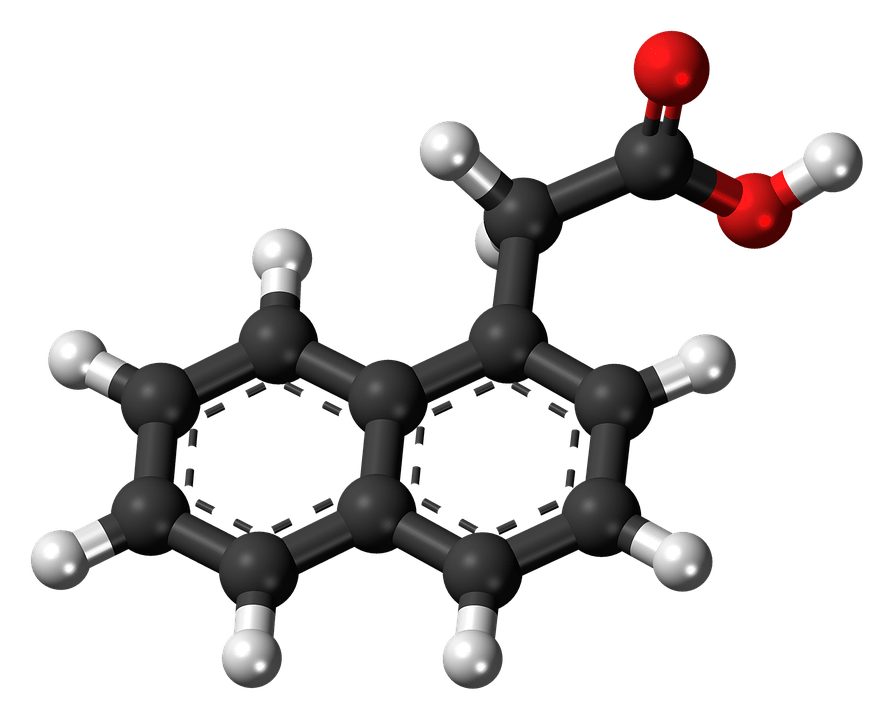The starting signal for the beginning of puberty is given by the hypothalamus. Its cells release the hormone gonadotropin. This stimulates the pituitary gland to release the hormones FSH and LH (follicle-stimulating hormone and luteinizing hormone), which are responsible for the production of the sex hormones estrogen and testosterone. These are ultimately responsible for the development of the genital organs.
Another hormone that stimulates sexual maturity is leptin. This is produced in fat cells and tells the brain when enough fat reserves are available and the body can begin to mature. Overweight children have particularly high levels of leptin. Researchers suspect that earlier onset of puberty is also linked to the increasing number of overweight children.
But even lean girls and boys mature faster today than in the past. One reason is a diet that consists mainly of simple sugars.
Puberty usually begins shortly before the age of eleven or twelve
One of the outward signs of puberty in girls is breast growth. In boys, the testicle volume increases and the penis gradually increases in size and then in length. “On average, puberty in Germany begins shortly before the age of eleven for girls and shortly before the age of twelve for boys,” explains Professor Olaf Hiort, head of the hormone center for children and adolescents at the Schleswig-Holstein University Medical Center. “But there is a great deal of fluctuation.”
When exactly puberty sets in depends on various factors. On the one hand, ethnic origin has an influence on the hormonal balance of adolescents; on the other hand, the onset of puberty seems to be “inherited”. Because if the parents reached sexual maturity at an early age, the children usually also belong to the “early starters”. In addition, living habits, diet and stress within the family are considered influencing factors.
Breasts are already growing in ten-year-old girls and the first menstrual period can start at eleven or twelve. In 2007 the average for the first period for girls in Germany was 12.8 years.
That was not always so
Around 110 years ago, puberty began in children around two to three years later. Can this be explained by social developments, other work and eating habits, for example?
“This requires long-term studies that are complex and expensive,” says the biochemist and endocrinologist Josef Köhrle, President of the German Society for Endocrinology, which deals with hormones and metabolism. “The answer to that is complex.
In the development years, the body’s hormonal system changes. The process begins in the brain: it releases hormones that increase the production of sex hormones in the ovaries or testicles and affect the body’s sexual functions, pubic hair and genital organs grow and become functional.
Köhrle sees weight gain in children as one of the main reasons for puberty being pushed forward. Poor quality of food, little sleep and too little exercise because a lot of free time is spent in front of screens are some of the causes of weight. Adipose tissue deposits lead to earlier maturation, there is clear evidence of this from animal experiments. The opposite effect can be seen in anorexia patients or high-performance athletes who often no longer have a cycle.
In addition, there is exposure to hormone-active substances, so-called endocrine disruptors, even during pregnancy. This creates more fat cells instead of muscle and bone cells, especially in girls. There are solid data from urine measurements of pregnant women for the burden on the child via the mother.
Hormonally active substances can be found in plastics and personal care products. In a study in 2013, the environmental organization BUND examined cosmetics in Germany and found such chemicals in almost every third product, including in baby pacifiers and toothbrushes.
The substance is bisphenol-A (BPA). The EU has rated this substance as particularly worrying since December 2017, also because it is reproductive harm. From 2020, the use of BPA in thermal paper will be banned in the EU. The Federal Environment Agency points out, however, that it is still in many everyday products such as drinking bottles, tins and DVDs.
Bisphenol-A is the talk of the town now, but there are a number of dangerous substances that can make up a toxic cocktail. But there is too little information about the main culprits. Whether it’s the butter dish, the plastic wrap in which the food is wrapped, the drink, the clothing or simply the air, the substances can be found everywhere. These substances are also found in medical products, for example in soft catheters or tubes.
It is important that we are aware of it – and pay attention to which foods, beverages and cosmetics etc. we consume!







